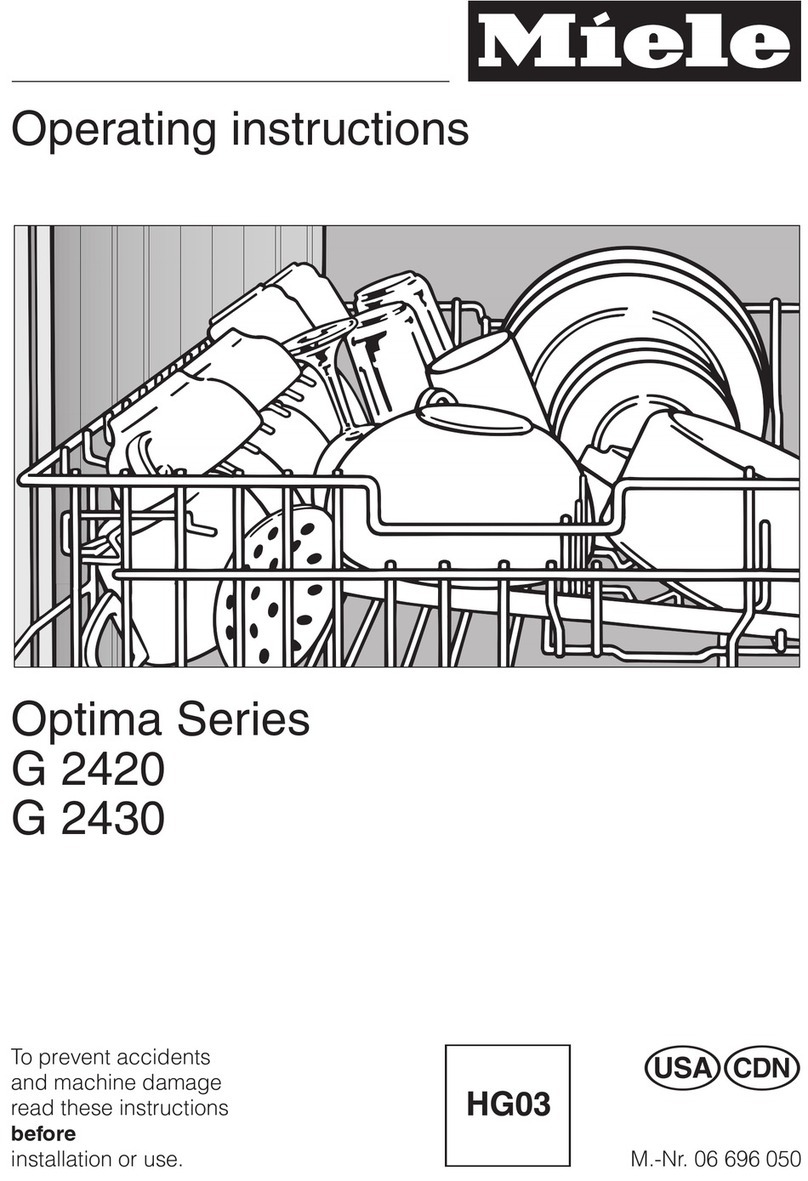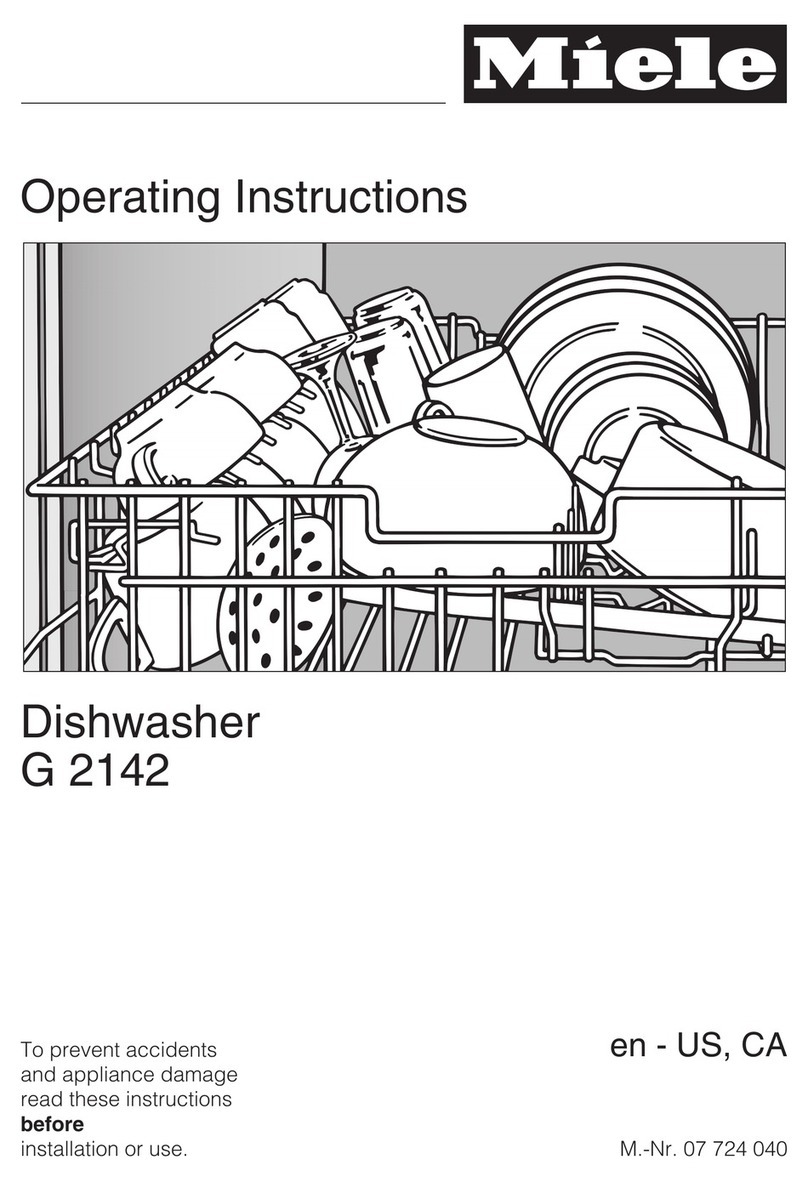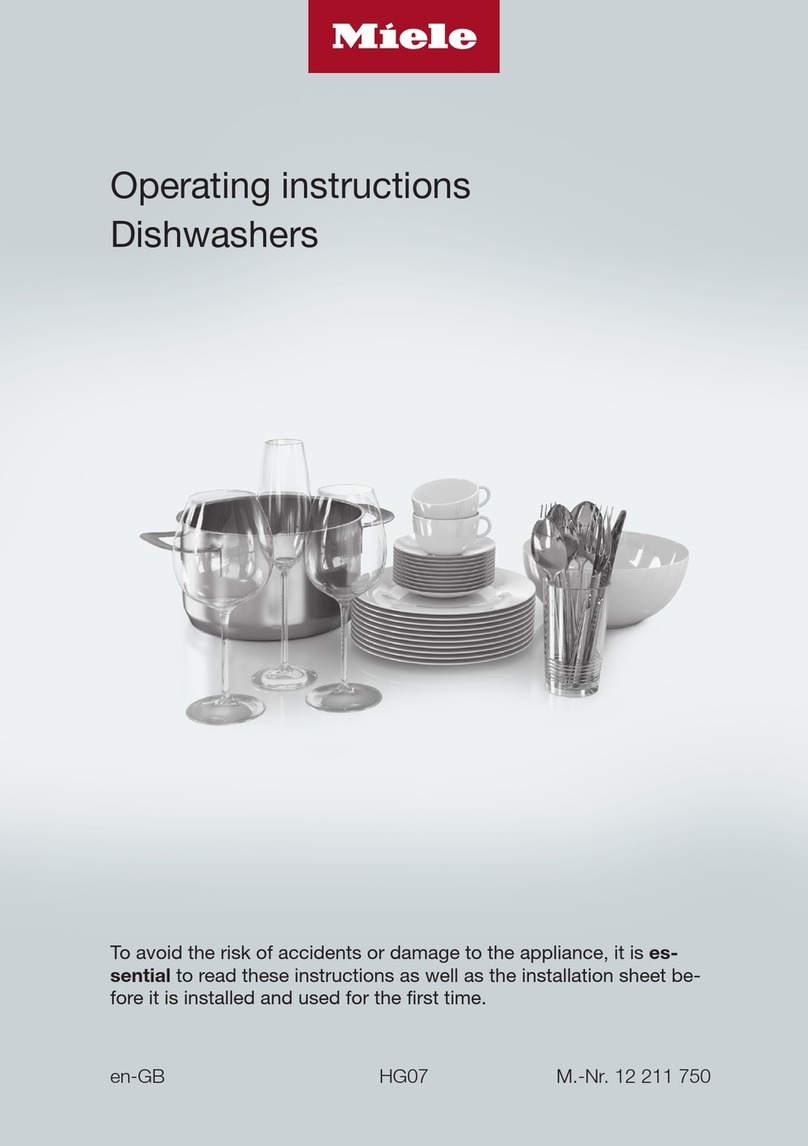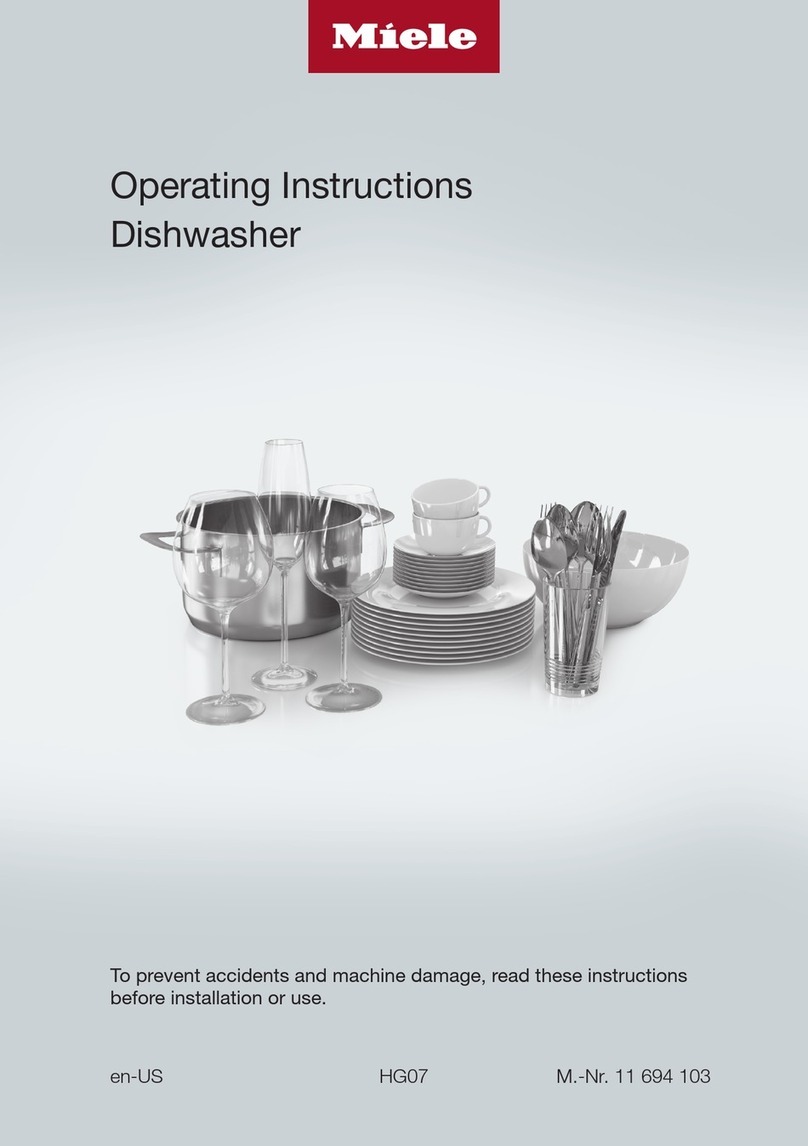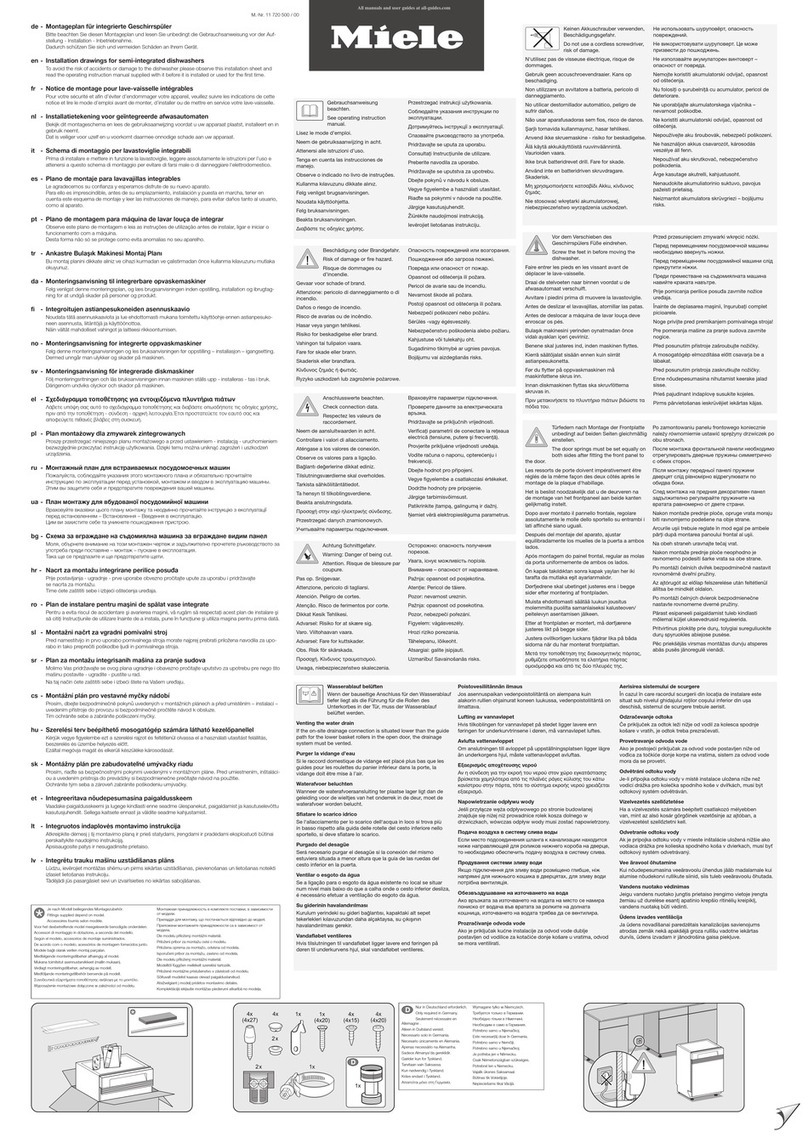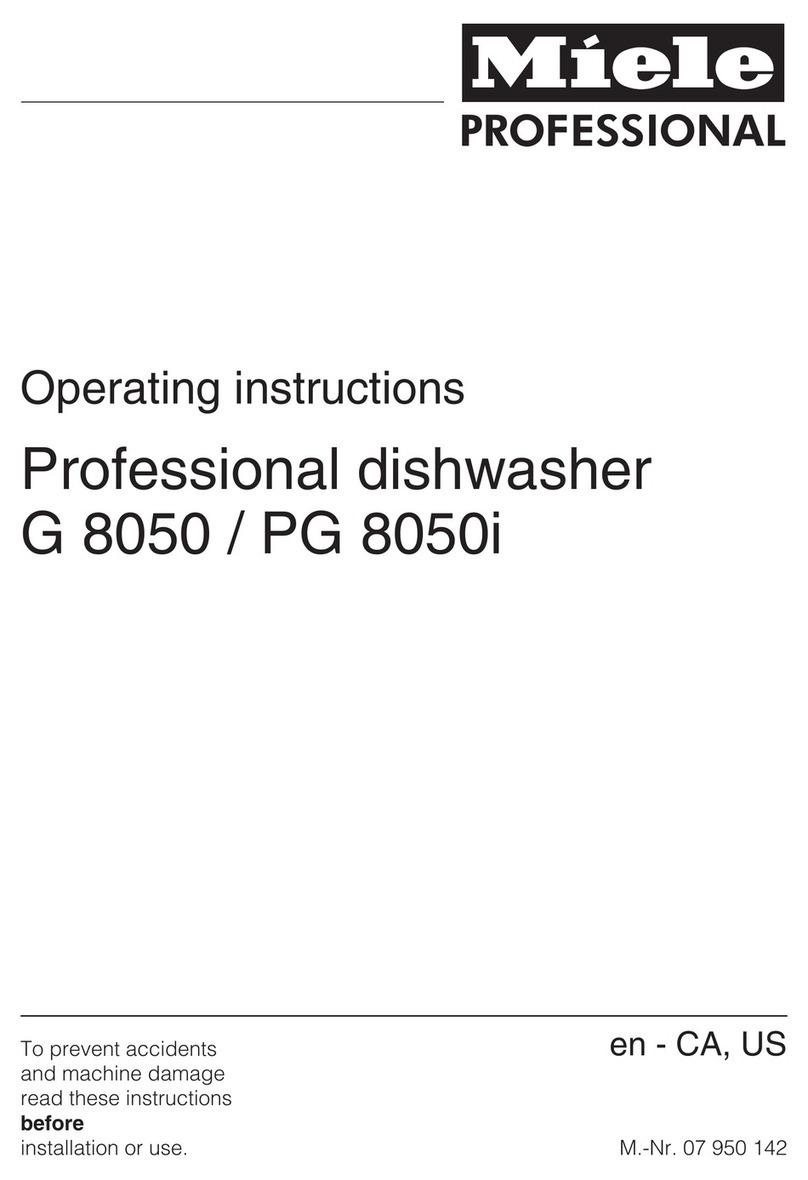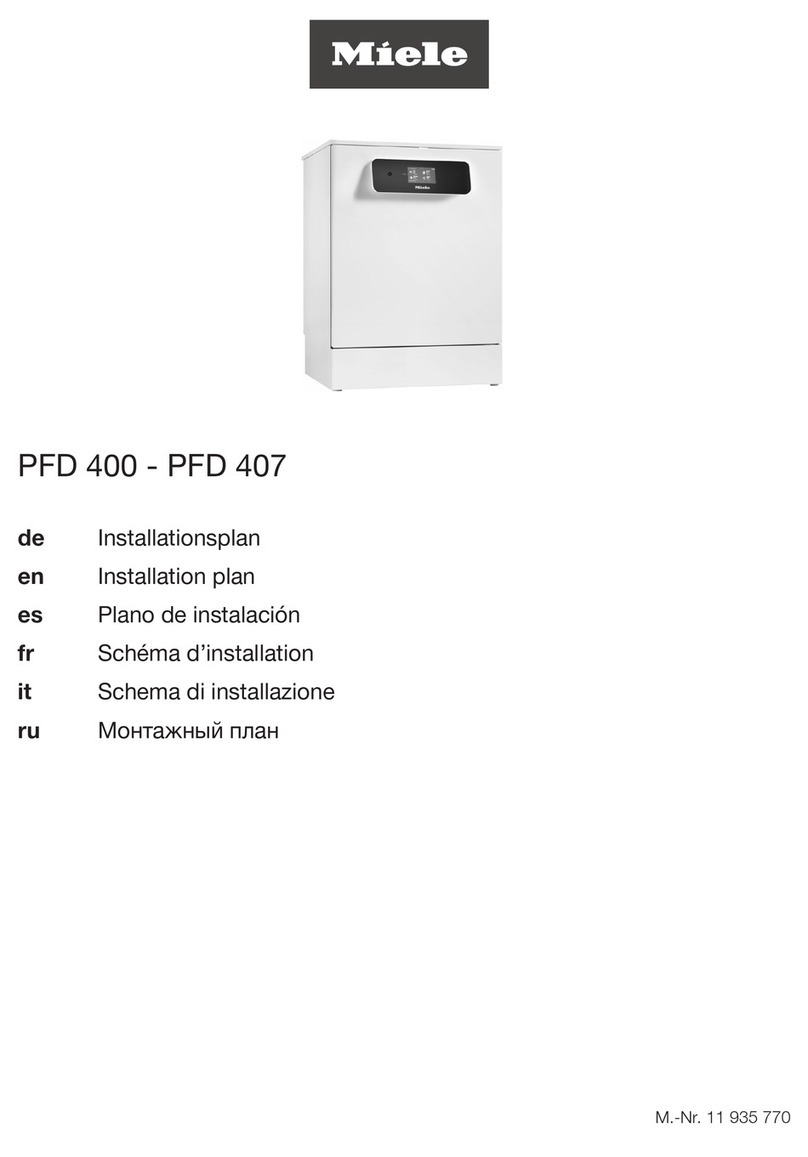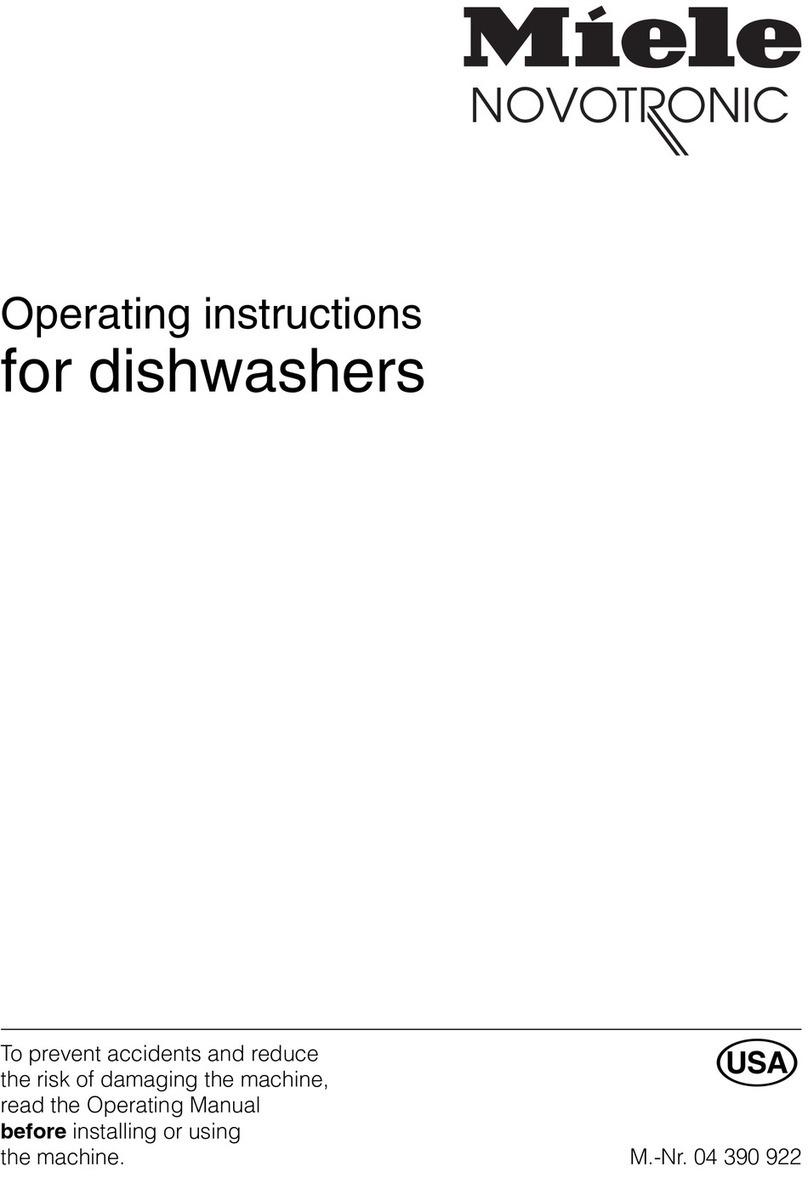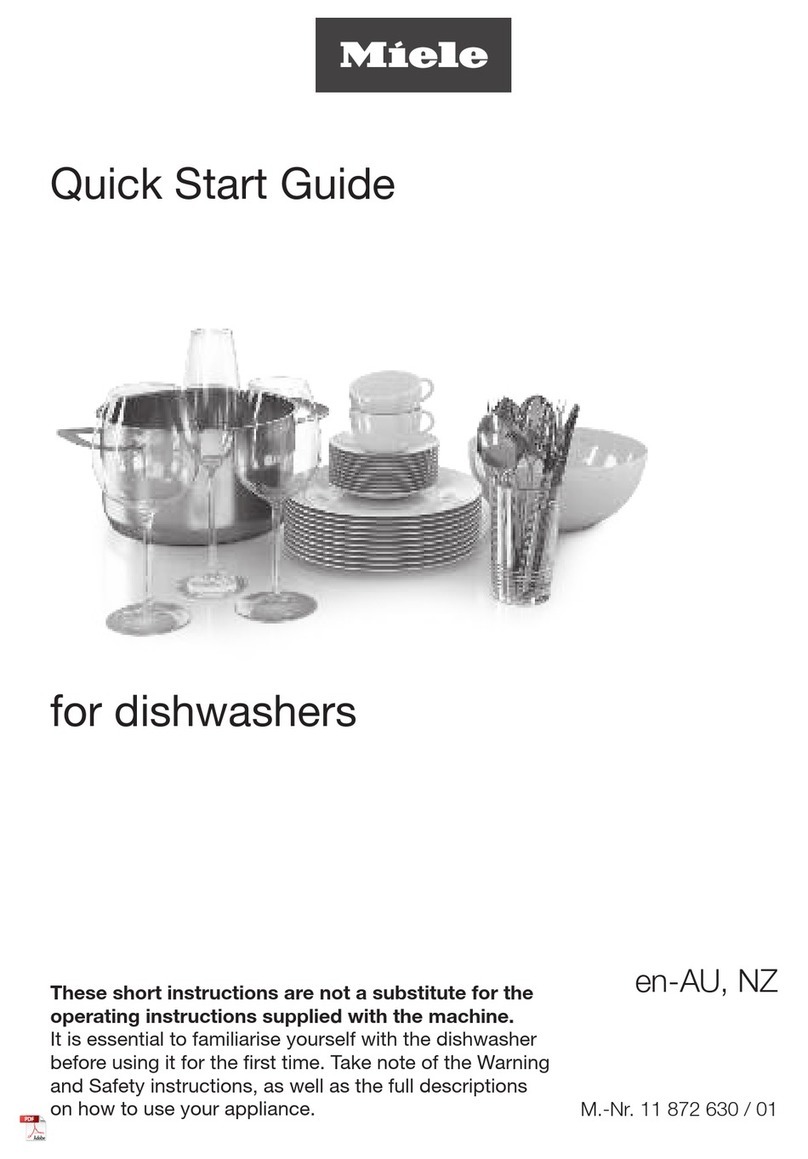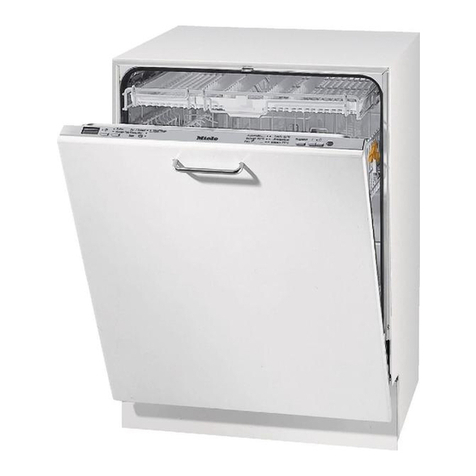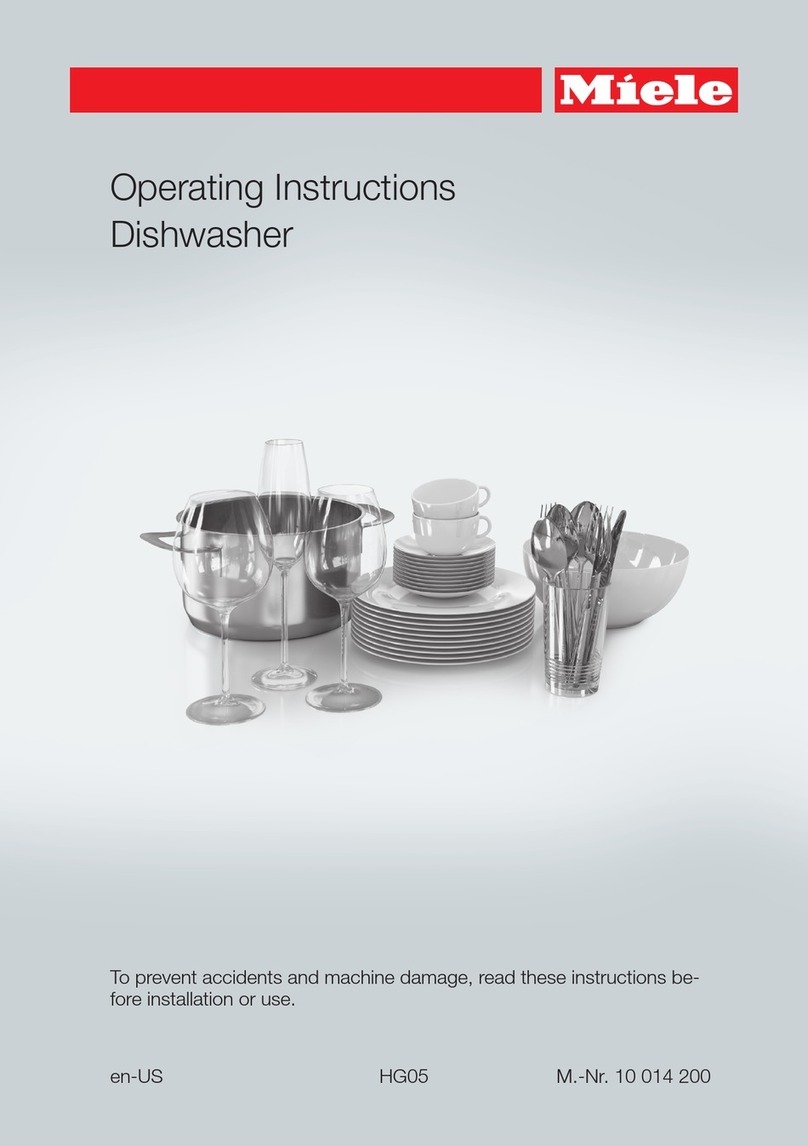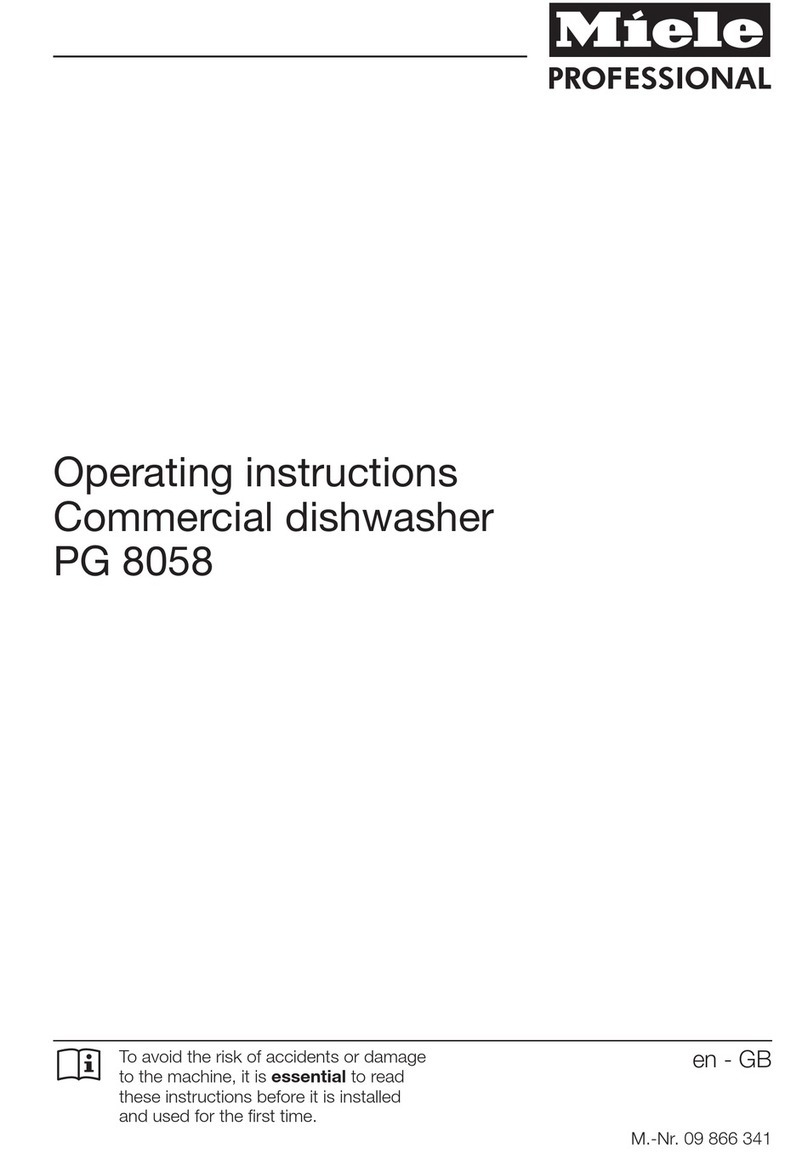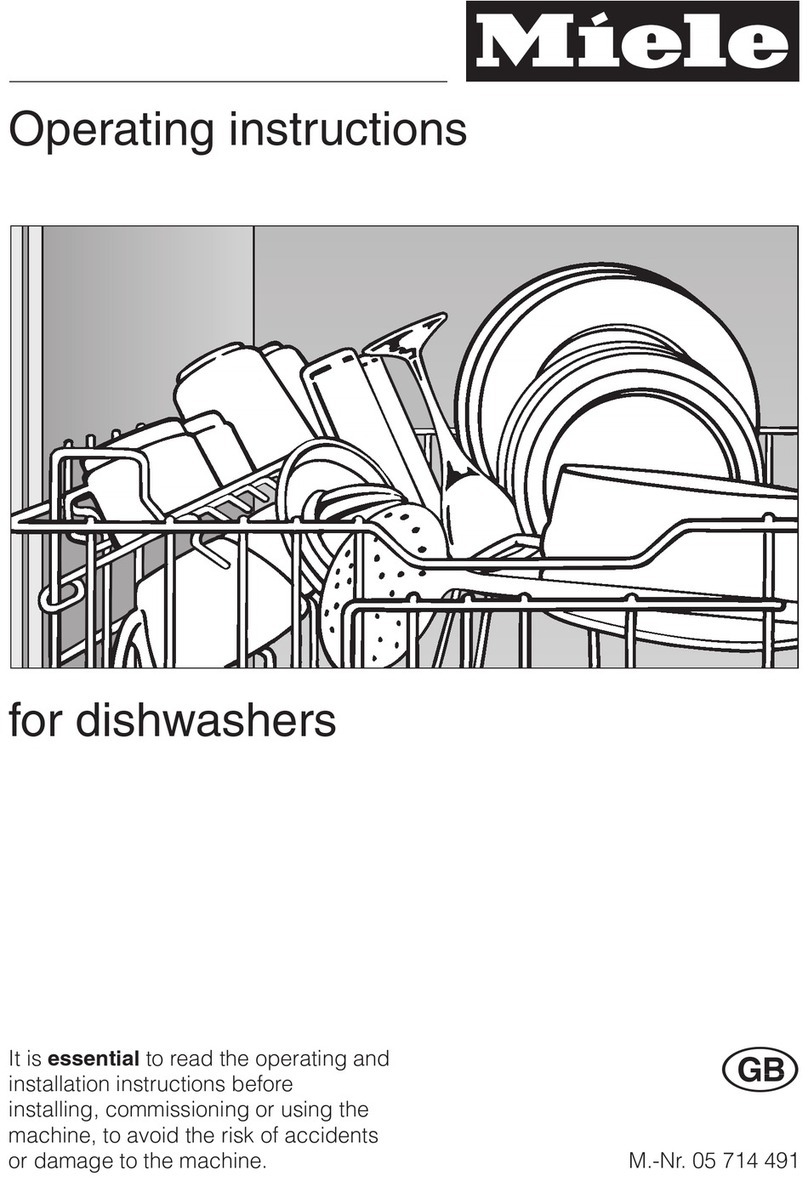Warning and safety instructions
This appliance conforms to current
safety requirements. Inappropriate
use can however lead to personal
injury and damage to property.
Read the operating instructions
carefully before starting to use this
machine.This way you will avoid the
risk of accidents, and damage to
the machine.
Keep these instructions in a safe
place for reference, and pass them
on to any future user.
Appropriate usage
This dishwasher is intended exclu-
sively for cleaning domestic croc-
kery and cutlery in a domestic house-
hold. Do not use for purposes other
than those for which it was designed.
Any other applications may be dan-
gerous.
The manufacturer cannot be held re-
sponsible for any damage caused by
improper use or for uses other than
those for which the appliance is in-
tended.
Delivery
A damaged appliance is dan-
gerous. It is therefore essential to
check packaging immediately and
examine the dishwasher for transport
damage. Under no circumstances
should you use a damaged machine.
Please ensure that the packaging
material is offered for recycling.
Installation
The dishwasher must be installed
and connected in compliance with
the installation instructions.
In order to ensure stability, built-
under and integrated dishwashers
must only be installed under a con-
tinuous worktop which is secured to ad-
jacent cabinetry.
The dishwasher must not be in-
stalled under a hob unit. The high
temperatures sometimes dissipated by
radiant heat could damage the dish-
washer.
Do not connect the dishwasher to
the mains supply until it has been
installed.
Check that the voltage, frequency
and fuse rating shown on the data
plate match the household mains sup-
ply.
The electrical safety of this ap-
pliance can only be guaranteed
when continuity is complete between
the appliance and an effective earthing
system. It is imperative that this basic
safety requirement is tested and where
there is any doubt the electrical system
in the house is checked out by a quali-
fied electrician.
The manufacturer cannot be held re-
sponsible for damage caused by the
lack or inadequacy of an effective ear-
thing system (electric shock, for
example).
Warning and safety instructions
6

